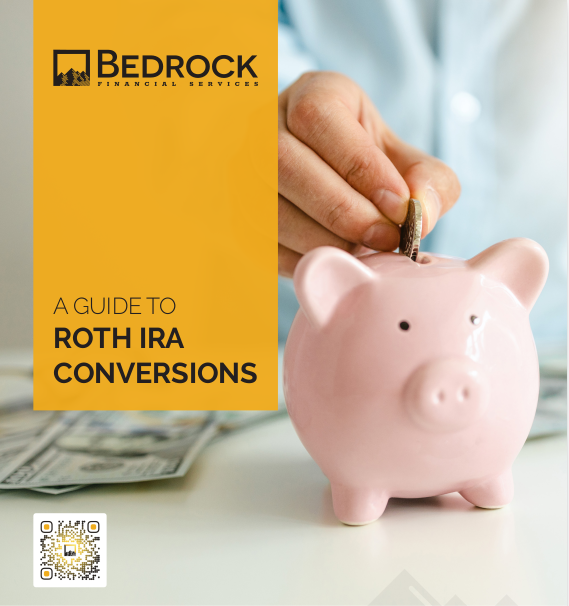Key Takeaways
-
Most agents still focus too heavily on sales messaging in their social media posts, which clients quickly tune out. What clients actually remember are consistent, relevant insights that feel personalized.
-
You don’t need to post more frequently—you need to post more intentionally. A single thoughtful post can outperform a week’s worth of generic content.
The Common Trap: Posting Like You’re Selling to Everyone
It’s easy to fall into the trap of thinking your social media page should read like a rotating billboard. Financial professionals often default to pushing product information, industry stats, or vague calls to action. While these might seem informative to you, they rarely hold attention unless they are tied to a larger, personal context.
You’re not alone if your content is more of a monologue than a conversation. The real mistake isn’t frequency or even format—it’s intent. When every post is designed to close a sale, it creates a wall between you and your audience. Clients aren’t looking to be pitched every time they scroll. They’re looking for relevance.
What Clients Pay Attention To Instead
-
Posts that reflect their current financial concerns (like inflation, retirement delays, caregiving needs)
-
Short, consistent educational content that feels timely
-
Authentic, story-driven messaging that shows you understand their life stage
-
Visual content that breaks down complex concepts without being condescending
You’re Talking About Products, Not Problems
When you focus your content around insurance types, annuity riders, or investment performance, you’re speaking a language your prospects don’t live in every day. Clients live in problems, not products. So, your messaging should start with their tension points—not your solution.
For example, instead of saying, “Index annuities protect against market downturns,” say, “What would it feel like to retire without worrying if the next market dip drains your savings?”
Ask Yourself:
-
Is this post answering a real client question I’ve been asked?
-
Am I showing how I think, not just what I sell?
-
Would I engage with this content if I weren’t in the business?
You’re Posting Too Much (or Too Randomly)
Many agents believe that more posts mean better engagement. But if the quality isn’t there, you’re just training your audience to scroll past your content faster. The 2025 audience doesn’t want daily reminders that you sell policies or manage accounts. What they do want is consistency with intention.
Posting 2-3 times a week is enough if:
-
Each post is tied to a core client concern
-
You’re not repeating the same call to action in every post
-
Your posts alternate between educational, emotional, and strategic content
Random or inconsistent posting creates the impression that you treat social media as an afterthought. That impression spills over to your perceived professionalism.
You’re Not Using the Power of Format
If every post is just a block of text or a recycled quote image, you’re missing major opportunities. Platforms like LinkedIn, Instagram, and even Facebook favor visually structured content. But the real opportunity in 2025 is format diversification.
Try alternating between:
-
Short-form video insights (under 90 seconds)
-
Polls or question boxes that drive feedback
-
Personal story snippets (from a “day in the life” of a client—anonymous but insightful)
-
Educational carousels that explain one concept clearly in 3-5 slides
You don’t have to be a video expert. Just be consistent. Clients aren’t comparing your production quality to a media studio—they’re looking for a genuine connection.
You’re Ignoring the Comments Section
Many financial professionals still treat social media like a megaphone rather than a two-way platform. Posting is only half the work. The real engagement happens in the comments, DMs, and reactions.
If someone takes the time to comment, that’s a micro-conversion. Ignoring it is like letting a prospect walk into your office and sit in the lobby without greeting them.
Make it a habit to:
-
Respond to every comment within 24 hours
-
Acknowledge thoughtful replies with follow-up questions
-
Turn comment themes into future content ideas
This responsiveness also improves your visibility on most platforms due to engagement-based algorithms.
You’re Not Tracking What Works
You might think a post is strong because it looks polished, but if it doesn’t resonate, it’s wasted effort. In 2025, platform analytics are robust and user-friendly—but many agents still don’t use them.
Track these key metrics weekly:
-
Saves and shares (these show real interest)
-
Comments (quality over quantity)
-
Profile visits after a post
-
DMs initiated from your post
Once a month, review the top 3 posts based on actual engagement. What do they have in common? Use that insight to guide your next batch of content.
You’re Not Being Memorable
In a crowded social media feed, your name alone won’t stick. But a story, a visual, or even a phrase you repeat can become part of your identity. That’s how memory works—through repetition and emotional context.
Be intentional with:
-
Signature phrases or analogies
-
A consistent visual theme or color scheme
-
Recurrent post structures (e.g., “Monday Myth Buster” or “Friday Finance Truth”)
The goal is to be recognized without needing to reintroduce yourself every time. Make your posts feel like chapters in the same story.
You’re Not Leveraging Seasonality
Financial concerns aren’t static. Clients think differently in April (tax time) than they do in September (open enrollment). Your content should reflect the emotional rhythm of the calendar.
Here’s a simple 4-quarter framework to follow:
Q1 (Jan-Mar):
-
Planning content: new goals, financial resets
-
Tax strategy tips
-
Insurance check-ins
Q2 (Apr-Jun):
-
Spring financial cleaning
-
College savings and family planning
-
Mid-year tax adjustments
Q3 (Jul-Sep):
-
Summer budgeting insights
-
Life event triggers (weddings, moves, etc.)
-
Retirement prep for fall
Q4 (Oct-Dec):
-
Open enrollment education
-
Year-end financial moves
-
Gratitude and legacy messaging
This approach not only keeps you relevant but positions you as timely and proactive.
You’re Not Human Enough
In a regulated, compliance-heavy industry, it’s understandable to play it safe. But safety doesn’t mean hiding behind a wall of formality. Clients still choose professionals based on trust, not product knowledge alone.
Being human on social media can look like:
-
Admitting uncertainty in a complex financial area
-
Sharing what motivates you to serve others
-
Expressing curiosity instead of giving hard answers
The more you show that you think like them, the more trust you build. You don’t have to overshare—you just need to show up as a real person.
What This Means for Your 2025 Strategy
Social media in 2025 isn’t about being the loudest or the flashiest. It’s about alignment. Alignment between what your clients care about and how you show up online. If your feed feels forgettable, it’s not a volume issue—it’s a clarity issue.
Make your content answer a real client worry. Let it reflect your thought process, not just your service list. If you can do that consistently, you won’t just gain followers. You’ll build a reputation.
Ready to Be the Advisor Clients Notice?
If you’re serious about transforming how you show up online, you don’t have to do it alone. At Bedrock Financial Services, we help financial professionals like you create memorable, scalable, and compliant marketing systems.
When you sign up, you gain access to our automation tools, done-for-you content strategies, and training that bridges sales with real connection.
Let us help you turn your social media presence into a trust-building machine.







